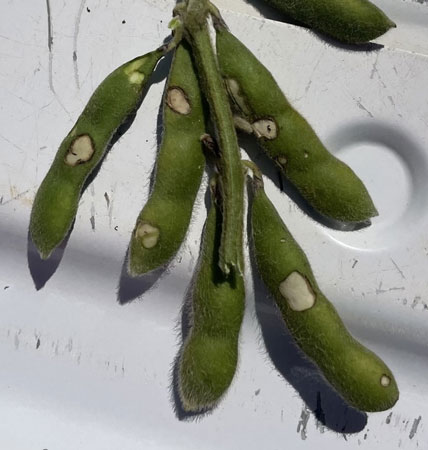Many late-planted soybeans are still in the R2-R5 stage of development, which means they are still susceptible to pod worm and/or adult bean leaf beetle feeding. Adult bean leaf beetles (Figure 1) may feed on new foliage or, more importantly, may feed on green pods (Figure 2).

Figure 1. Adult bean leaf beetles. Photos provided by K-State Department of Entomology.

Figure 2. Pod damage by bean leaf beetles. Photo provided by K-State Department of Entomology.
Pod feeding may open this protective covering enough so the beans fall out, or for the beans to dry out, or to allow pathogens access to the bean. None of these scenarios enhance yield. These adult bean leaf beetles may feed on pods until there are no more, then move to overwintering sites. Pod worms, on the other hand, feed on the beans within the pod (Figure 3) but for only about two weeks while they are in the larval stage and while the pods are still green. Field monitoring should continue until plants are mature with no more green pods.

Figure 3. Soybean pod worm feeding on beans within a pod. Photo provided by K-State Department of Entomology.
Jeff Whitworth, Extension Entomologist
jwhitwor@ksu.edu